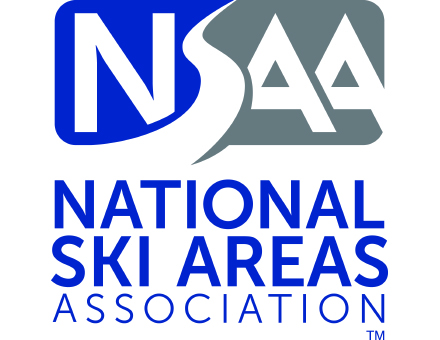SAM Magazine—Lakewood, Colo., June 8, 2021—Skier visits in the U.S. totaled 59 million during the 2020-21 winter season, according to the National Ski Areas Association (NSAA). It was the fifth best season on record and a strong improvement upon the pandemic-shortened 2019-20 season, which tallied 51.1 million visits. Despite the challenges of modified operations, capacity restrictions, and other Covid-related adjustments, 78 percent of ski area operators said this season exceeded their expectations. 
"What a year it has been. From utter uncertainty to a top 10 season in terms of participation—it shows the wide spectrum that our industry bridged this year,” said NSAA president and CEO Kelly Pawlak. “We are proud of the collaborative adoption of Covid-19 best practices that all ski areas implemented and diligently followed from opening to closing day. Americans yearned for safe outdoor recreation, and ski areas across the country delivered.
"We are very appreciative of the support and cooperation of our customers, and the tenacious and diligent work of our staff, the combination of which resulted in a successful season,” Pawlak said.
The average U.S. ski area was open for 112 days this past season, up from 99 days in the truncated 2019-20 season, yet shy of the 121 days ski areas operated on average during the 2018-19 season.
According to NSAA, small and medium-sized ski areas—as measured by lift capacity—performed well this winter, in keeping with the prediction that more guests would ski locally, and local demand for outdoor recreation was high in general. Small ski areas were the only category to record an increase in visits for the 2019-20 season.
Covid adjustments. During a strange season in which ski areas had to rethink and generally change their operations, the most common Covid-related adjustments were skier capacity limits (both indoor and on-mountain), advance purchase or reservation requirements for both lift access and rental equipment, and changes to or the elimination of group lessons.
"People had to change their habits during the pandemic, and ski areas were no different,” Pawlak said. “We tried new things and quickly learned that not only did they function as planned, but many of these ‘work arounds’ improved the experience for our guests and staff members. Ski area operators will use this experience to continue trying new techniques and technology."
Technology adoption. Ski areas adopted new online reservation systems and updated e-commerce solutions, as many required the advance purchase of lift tickets to manage capacity. As a result, window ticket sales accounted for just 17 percent of ticket sales, down from 46 percent in 2019-20. Passholder visits rose to 51 percent of the total, from 45 percent in 2019-20.
Also, in response to indoor capacity limits, 41 percent of ski areas implemented some form of online ordering for food and beverage outlets. This broad technology upgrade is one of the pandemic silver linings that will benefit the industry moving forward.
Another silver lining of the pandemic: an increase in midweek business. Weekday visitation accounted for 48 percent of total visits, a 27 percent increase from the previous season. While capacity restrictions and remote schooling will likely be things of the past for winter 2021-22, the shift to work-from-home may continue to be a good thing for the historically slower midweek days.
In other good news, snowtubing participation doubled.
Lessons and food and beverage were two of the hardest hit business units at ski areas this past winter. Lessons decreased in number by 30 percent. According to NSAA, food and beverage data are still being analyzed, but revenues are expected to be down. One indication: Vail Resorts third-quarter results showed its dining revenue decreased 26.5 percent year-over-year for the February – April period.
Like many industries, finding staff was a challenge for ski areas. Sixty percent of responding ski areas stated that they were not fully staffed this winter. The pause on J-1 and H-2B international worker visa programs was a contributing factor; the average ski area was short 55 employees, half of whom would have come on an international work visa.
The full Kottke End-of-Season/Demographic report will be released later this summer.




